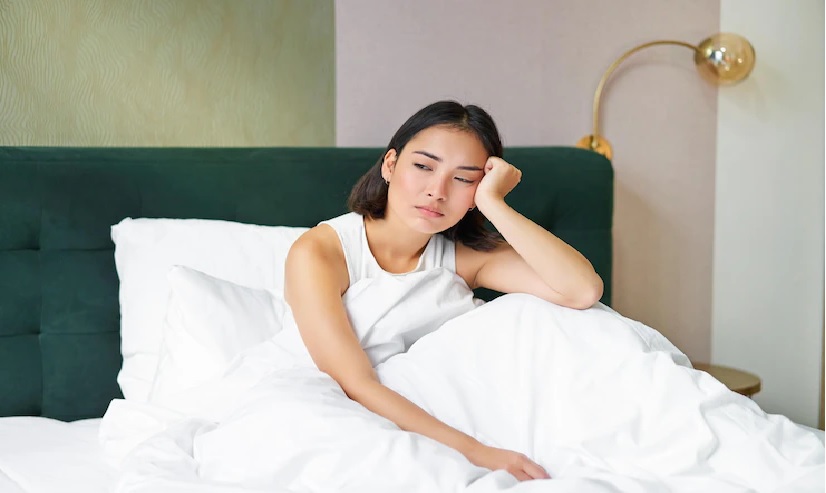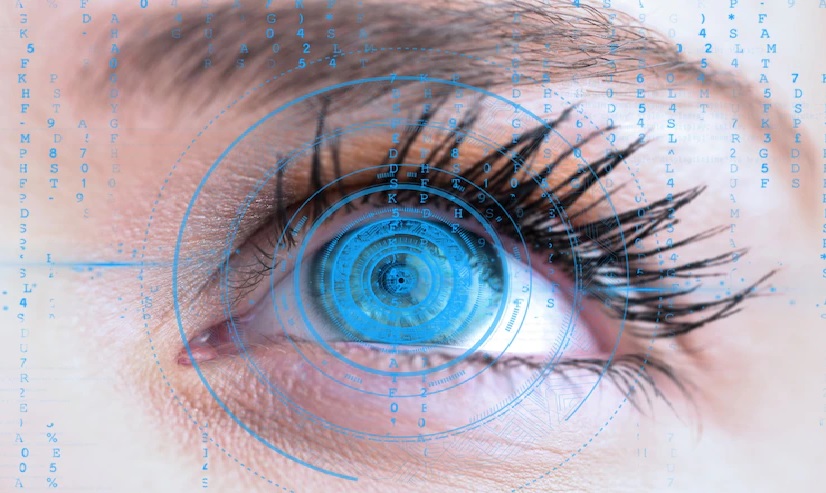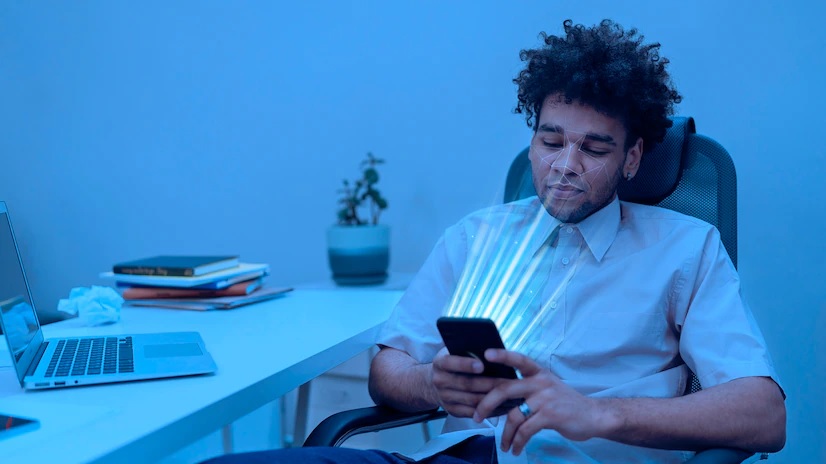Table of Contents
Introduction
In this article, we will explain about harmful effects of Electronic Devices Blue Light on our health. In the 21st century, the rise of technology has revolutionized our lives, offering us unprecedented connectivity and convenience through a plethora of gadgets.
From smartphones and tablets to laptops and e-readers, these devices have become indispensable tools for work, communication, and leisure. However, the technological revolution brings with it a less-discussed concern: the potential health risks associated with prolonged exposure to blue light emitted by these gadgets.
Recent scientific studies have unveiled the potential dangers of this blue light, shedding light on its impact on our health. In this comprehensive article, we will delve into the multifaceted effects of blue light, explore how it affects our sleep patterns, strains our eyes, examine potential long-term health consequences, and provide actionable strategies to minimize its adverse effects.
The electromagnetic spectrum encompasses a wide range of colors, each defined by its unique wavelength and energy level. Blue light, situated on the higher-energy end of the spectrum, possesses a shorter wavelength. While natural blue light from the sun plays a vital role in regulating our circadian rhythms and boosting daytime alertness, the artificial blue light emitted by electronic devices introduces a novel challenge to our health.
How does Electronic Devices Blue Light impact our Health?
Blue light is a high-energy visible (HEV) light that is emitted by various sources, including the sun, digital devices like smartphones, tablets, and computers, as well as LED lighting. While blue light is a natural component of sunlight and has some positive effects on our health, such as regulating our sleep-wake cycle (circadian rhythm) and boosting alertness during the day, excessive exposure to artificial blue light, especially during nighttime, can have negative impacts on our health. Here are some ways blue light can impact our health:
Sleep Disruption: Exposure to blue light, especially in the evening or nighttime, can interfere with the production of melatonin, a hormone that regulates sleep. Melatonin is produced in response to darkness and helps signal to our bodies that it’s time to sleep. Excessive blue light exposure, particularly from screens and devices, can suppress melatonin production, making it harder to fall asleep and disrupting sleep quality.

Circadian Rhythm Disruption: Blue light exposure, especially during the evening, can confuse our internal body clock and disrupt our circadian rhythm. This can lead to irregular sleep patterns, difficulty falling asleep, and even conditions like shift work disorder.
Digital Eye Strain: Prolonged exposure to digital devices that emit blue light can contribute to digital eye strain, also known as computer vision syndrome. Symptoms may include dry eyes, blurry vision, eye discomfort, headaches, and difficulty focusing.
Macular Degeneration: Some studies suggest that prolonged exposure to blue light, particularly high-energy blue-violet light, could contribute to retinal damage and an increased risk of age-related macular degeneration (AMD). Maculas are responsible for central vision in the retina.
Disruption of Mood and Mental Health: While research is ongoing, some studies have indicated a potential link between excessive blue light exposure, particularly during the evening, and mood disorders such as depression and anxiety. The disruption of circadian rhythms and sleep patterns could contribute to these effects.

Increased Daytime Alertness: Exposure to blue light during the daytime can have positive effects, such as boosting alertness, improving mood, and increasing cognitive performance. This is why exposure to natural blue light from sunlight during the day is important for maintaining a healthy sleep-wake cycle.
How to prevent yourself from Electronic Devices Blue Light?
Blue light, a high-energy visible (HEV) light emitted by sources like the sun and digital screens, plays a crucial role in regulating our sleep-wake cycle and boosting daytime alertness. However, overexposure to artificial blue light, especially during the evening and nighttime, can disrupt our circadian rhythm, interfere with sleep, and potentially harm our eyes and overall health.
One of the most significant impacts of blue light is its effect on sleep. Exposure to blue light in the evening, particularly from screens like smartphones, tablets, and computers, can suppress the production of melatonin, a hormone that signals our body it’s time to sleep. To prevent this disruption, consider adopting a few habits:
1. Limit Screen Time Before Bed: To safeguard your sleep quality, avoid using digital devices at least an hour before bedtime. This allows your body to naturally wind down and encourages melatonin production.
2. Use Blue Light Filters: Many devices now offer settings that reduce blue light emission, typically known as “night mode” or “blue light filter.” Activate this feature in the evening to minimize melatonin suppression.
3. Invest in Blue Light Blocking Glasses: These glasses are designed to filter out harmful blue light. Wearing them in the evening can help mitigate the negative effects of blue light exposure on sleep.
4. Create a Relaxing Evening Routine: Engage in calming activities before bed, such as reading a physical book (with warm lighting), practicing relaxation techniques, or taking a warm bath. Your body will be able to tell when it’s time to wind down as a result.

Beyond sleep disruption, blue light can strain our eyes and potentially contribute to retinal damage. To protect your eyes:
1. Follow the 20-20-20 Rule: When using digital devices, take a break every 20 minutes and focus on something 20 feet away for at least 20 seconds. This reduces eye strain and gives your eyes a chance to relax.
2. Adjust Screen Brightness: Lower the brightness of your screens to a comfortable level, and ensure proper lighting in your environment to reduce glare.
3. Consider Anti-Reflective Coating: If you wear prescription glasses, consider adding an anti-reflective coating that helps minimize glare and screen-induced eye strain.
To enhance your overall well-being and mood, manage your exposure to blue light:
1. Spend Time Outdoors: Natural sunlight during the day helps regulate your circadian rhythm and boosts your mood and alertness. Aim for outdoor activities to benefit from natural blue light.
2. Choose Warm Lighting: In the evening, opt for warm-colored lighting sources such as incandescent bulbs or warm LED lights. These emit less disruptive blue light and create a relaxing atmosphere.
3. Develop a Consistent Sleep Schedule: Going to bed and waking up at the same time every day helps regulate your body’s internal clock. This consistency supports a healthier sleep pattern.
“Digital Eye Strain” cause by Electronic Devices Blue Light
Digital Eye Strain, also known as Computer Vision Syndrome, stems from prolonged exposure to digital screens emitting blue light. This high-energy, short-wavelength light scatters easily within the eye, causing visual discomfort. Blue light’s adverse impact lies in its potential to disrupt the natural focusing ability of the eyes, contributing to symptoms like eye strain, blurred vision, and headaches.

Blue light’s effects extend beyond immediate discomfort. It interferes with the body’s sleep-regulating hormone, melatonin, leading to sleep disturbances. This is particularly concerning when screens are used before bedtime, as the disrupted sleep-wake cycle can compound the strain on the eyes and overall well-being.
Mitigating Digital Eye Strain involves addressing blue light exposure. Utilizing “night mode” settings on devices reduces blue light emission, lessening the strain on the eyes during evening use. Blue light-blocking glasses offer an effective physical barrier against blue light’s effects, aiding in maintaining visual comfort.
In a technology-driven world, where screen use is pervasive, understanding the role of blue light in causing Digital Eye Strain underscores the importance of balancing our interaction with screens and employing strategies that prioritize eye comfort and overall health.
FAQs about Electronic Device Blue Light

1. What is Electronic Device Blue Light?
Blue light is a high-energy, short-wavelength light on the visible light spectrum. It is emitted by various sources, including the sun, digital screens (phones, tablets, computers), and LED lighting.
2. How does Electronic Devices Blue Light affect our health?
Blue light exposure, especially at night, can disrupt the body’s natural circadian rhythm, making it harder to fall asleep. Prolonged exposure to blue light from screens may also contribute to digital eye strain, which can cause discomfort, dryness, and blurred vision.
3. Can Electronic Devices Blue Light from screens damage the eyes?
Extended exposure to blue light from screens may lead to digital eye strain, also known as computer vision syndrome. Symptoms include eye discomfort, dryness, headaches, and blurred vision. While blue light itself isn’t thought to cause permanent eye damage, reducing exposure can help alleviate these symptoms.
4. Does Electronic Devices Blue Light cause insomnia?
Yes, exposure to blue light, particularly in the evening, can suppress the production of melatonin, a hormone that regulates sleep. This can disrupt the sleep-wake cycle and potentially lead to insomnia or poor sleep quality.
5. How can I reduce Electronic Devices Blue Light?
Several strategies can help reduce blue light exposure:
- Use “night mode” or “blue light filter” settings on devices to reduce the blue light emitted.
- Consider using blue light-blocking glasses when working on screens for extended periods, especially in the evening.
- Limit screen time before bedtime to allow your body’s natural sleep processes to occur.
6. Are there any benefits to blue light exposure?
Yes, blue light exposure during the day helps regulate your circadian rhythm, boosts mood, and enhances cognitive function. It can also improve alertness and concentration.
7. Do all electronic devices emit the same amount of blue light?
No, different devices emit varying levels of blue light. Smartphones, tablets, and computer screens emit blue light, but their intensity and composition can differ. Some devices also offer blue light reduction settings to mitigate the impact.
8. Can blue light filters on screens completely eliminate the effects of blue light?
While blue light filters can reduce the amount of blue light emitted by screens, they may not completely eliminate its effects, especially if used at night. Dimming screens and reducing exposure in the hours leading up to sleep are additional steps that can be beneficial.
9. Can blue light filters affect the quality of the screen display?
Blue light filters can slightly alter the color temperature of the screen, giving it a warmer hue. While this might take some getting used to, it generally doesn’t significantly impact the overall display quality.
10. Are there long-term health risks associated with Electronic Devices Blue Light exposure?
The long-term health risks of blue light exposure are still being studied, but research suggests that excessive exposure at night can disrupt sleep and potentially contribute to conditions like obesity, diabetes, and certain types of cancer. However, more research is needed to establish concrete links.
Summary
Electronic Devices Blue Light is a type of visible light with a short wavelength and high energy. It is emitted by various sources, including the sun and electronic devices such as smartphones, tablets, and computers.
In addition to sleep disruption, prolonged screen time can contribute to digital eye strain, also known as computer vision syndrome. Staring at screens for extended periods can cause symptoms like eye discomfort, dryness, blurred vision, and headaches.
This discomfort is partly attributed to the intensity of blue light emitted by screens and the fact that we tend to blink less frequently when using screens, leading to dry eyes.
In summary, blue light from electronic devices can have both positive and negative effects on our health. While it helps regulate our sleep and keeps us alert during the day, excessive exposure, especially in the evening, can disrupt our sleep patterns and contribute to digital eye strain.
Employing strategies such as using blue light filters, limiting screen time before bedtime, and adopting healthy screen habits can help minimize the potential negative impacts of blue light on our well-being. If you’re concerned about the effects of blue light on your health, it’s a good idea to consult with a healthcare professional for personalized guidance.
In this article, we have well explained side effect of Electronic Devices Blue Light in our life, Please revert for any clarification.

